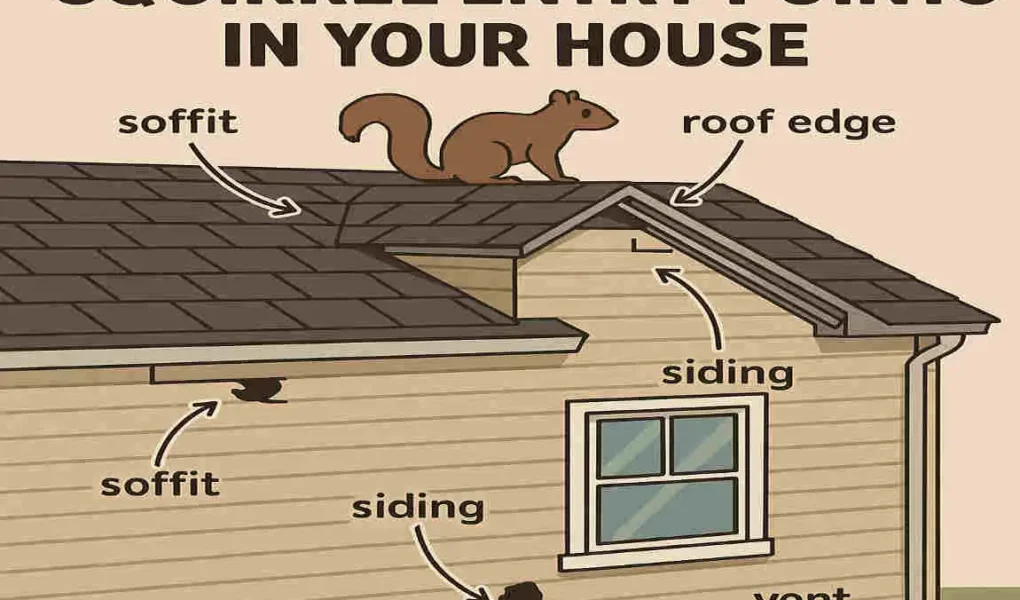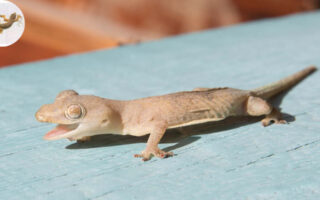Squirrels are clever and agile creatures that can sneak into homes through surprisingly small gaps and openings. Identifying their entry points early is crucial to preventing damage and infestation. Common entry points include gaps under eaves, loose shingles, uncapped chimneys, rotted wood in soffits and fascias, uncovered vents, and tree branches or utility lines that provide easy access to roofs. Signs of squirrel intrusion often include scratching noises, chew marks, droppings, and nesting materials around these vulnerable areas. Regular inspection of these spots, especially around the roofline and attic, helps in spotting and sealing squirrel entry points to keep the Squirrels home secure.
Understanding Squirrels and Their Behavior
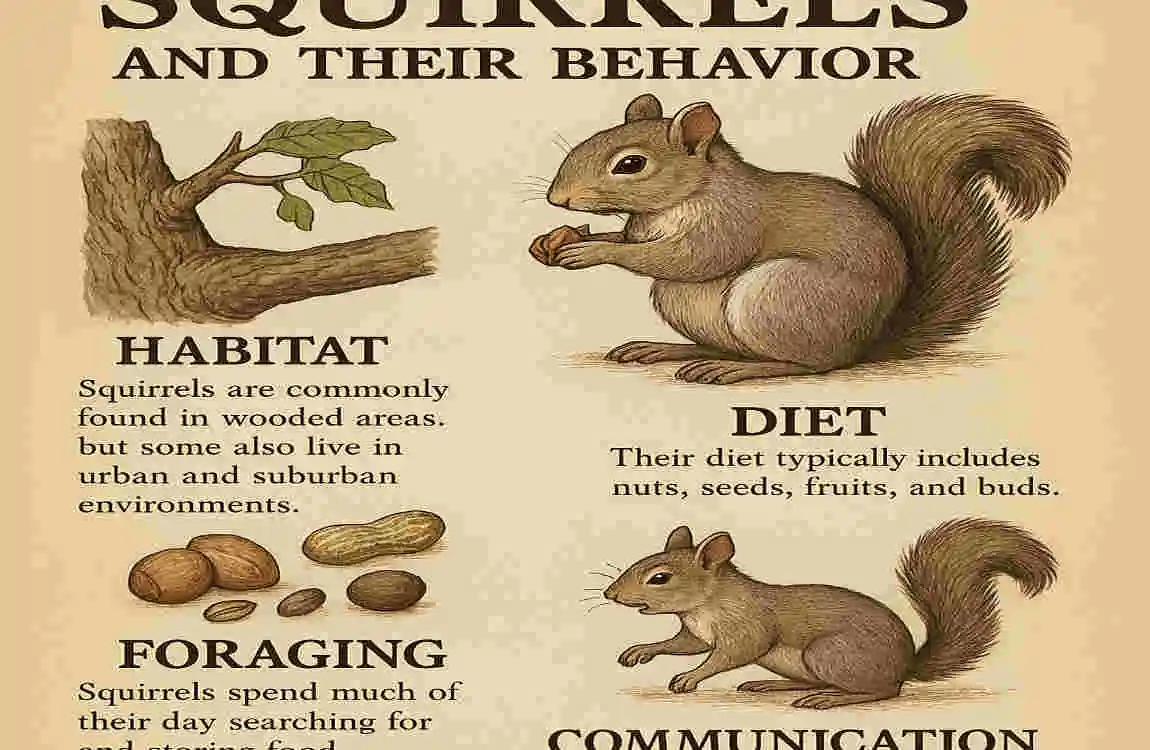
Squirrels are fascinating creatures known for their agility and intelligence. They belong to the rodent family, boasting sharp front teeth perfect for gnawing. Their primary instinct is Survival, motivating them to explore various environments.
These critters are primarily diurnal, meaning they’re most active during the day. You’ll often spot them chasing each other or foraging for nuts and seeds in parks or backyards. Squirrels have remarkable climbing skills that allow them to navigate trees effortlessly, making it easy for them to access higher areas of your home.
Social animals by nature, they communicate through chirps and tail movements. This social house structure facilitates the discovery of food sources while alerting others to potential threats nearby. Understanding these behaviors can help homeowners anticipate how squirrels might approach their homes in search of shelter or snacks.
Why Squirrels Enter Houses
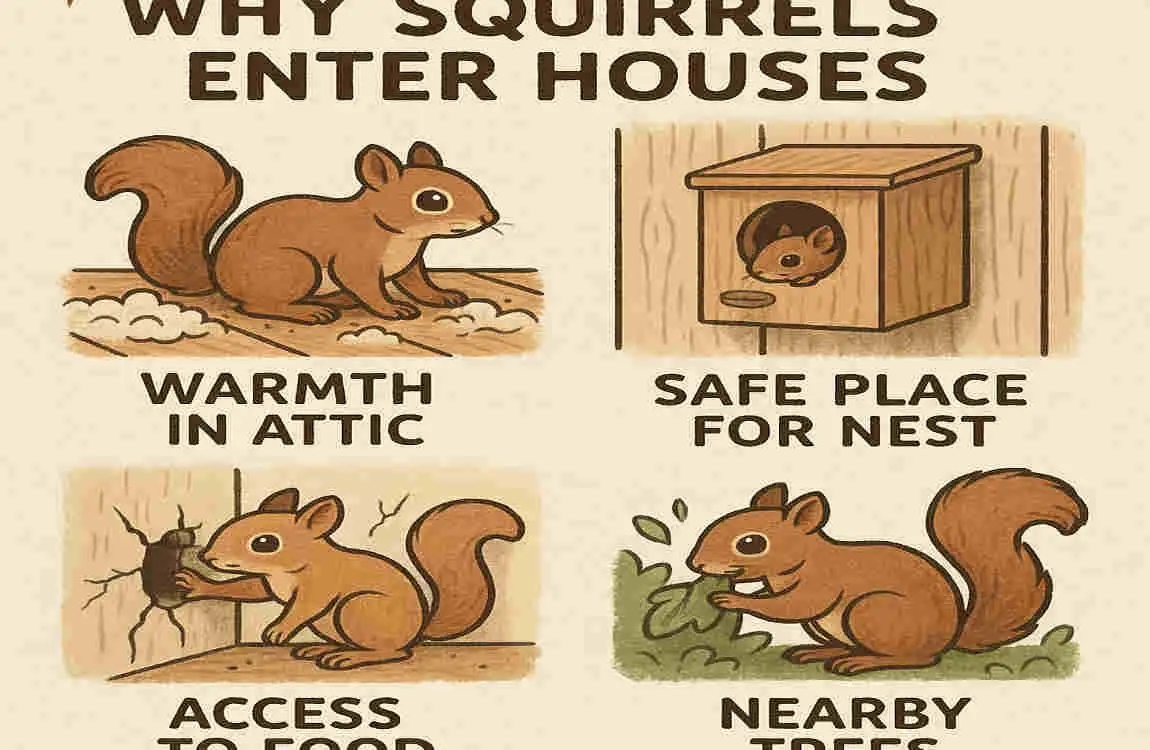
Squirrels are resourceful creatures, constantly on the lookout for food and shelter. Their instincts drive them to seek warmth and safety, especially during colder months.
Houses often provide an enticing environment. Attics, basements, or even wall cavities can offer a cozy refuge from harsh weather. These areas give squirrels an ideal place to build nests away from predators.
Food is another major draw. Bird feeders, open garbage cans, or leftover pet food create a buffet that’s hard to resist. Squirrels have sharp senses and will follow their noses right into your home cleaning if they catch a whiff of something tasty.
Curiosity also plays a role in their entry behavior. Squirrels are naturally inquisitive animals; they explore new spaces without hesitation. This blend of necessity and curiosity makes homes particularly appealing targets for these agile critters.
Signs of Squirrel Presence in Your House
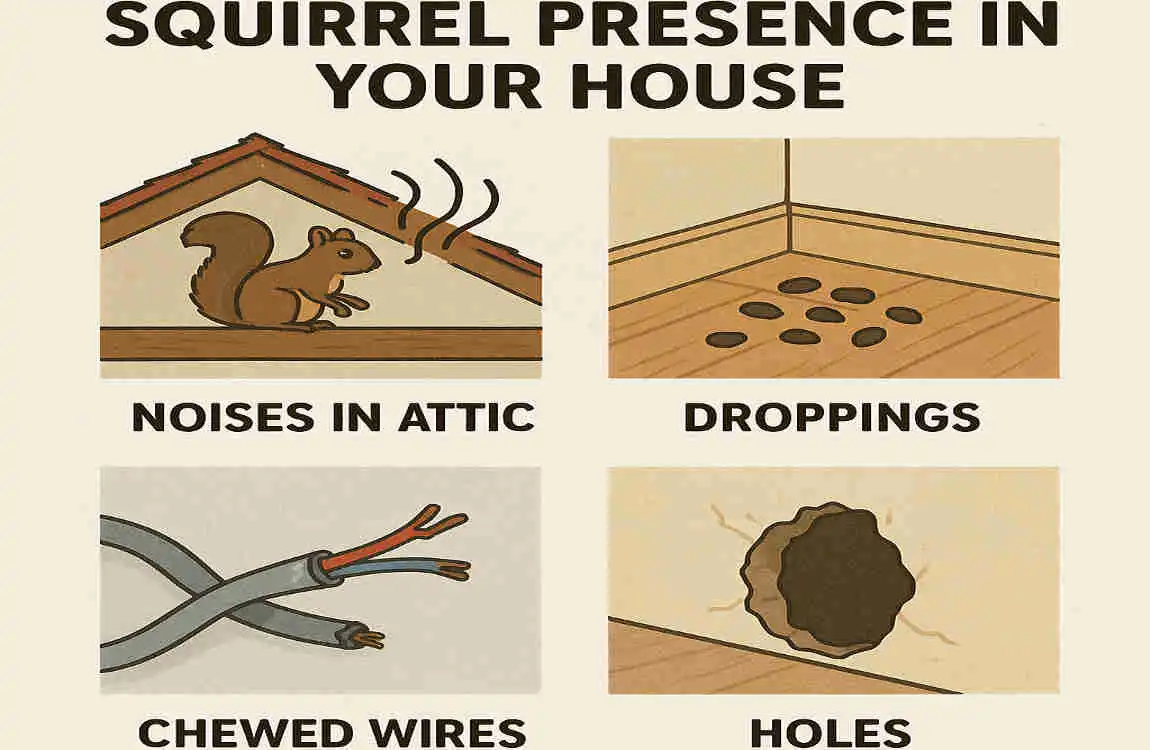
Squirrels can be pretty sneaky when it comes to invading your home. One of the first signs is unusual noises in your attic or walls, especially during dawn and dusk. These sounds often resemble scurrying or scratching.
Another indicator is finding droppings near entry points or nesting areas. Squirrel feces are small, dark, and pellet-like—an unmistakable sign of their presence.
Look for gnaw marks on house wires, wood beams, or insulation. Their ever-growing teeth require constant chewing to maintain size.
You may also notice nests made from twigs and leaves tucked away in eaves or attics. This indicates that squirrels have taken up residence.
Check for missing shingles or gaps around vents; these could serve as easy access points for these agile creatures seeking shelter.
Locating Entry Points
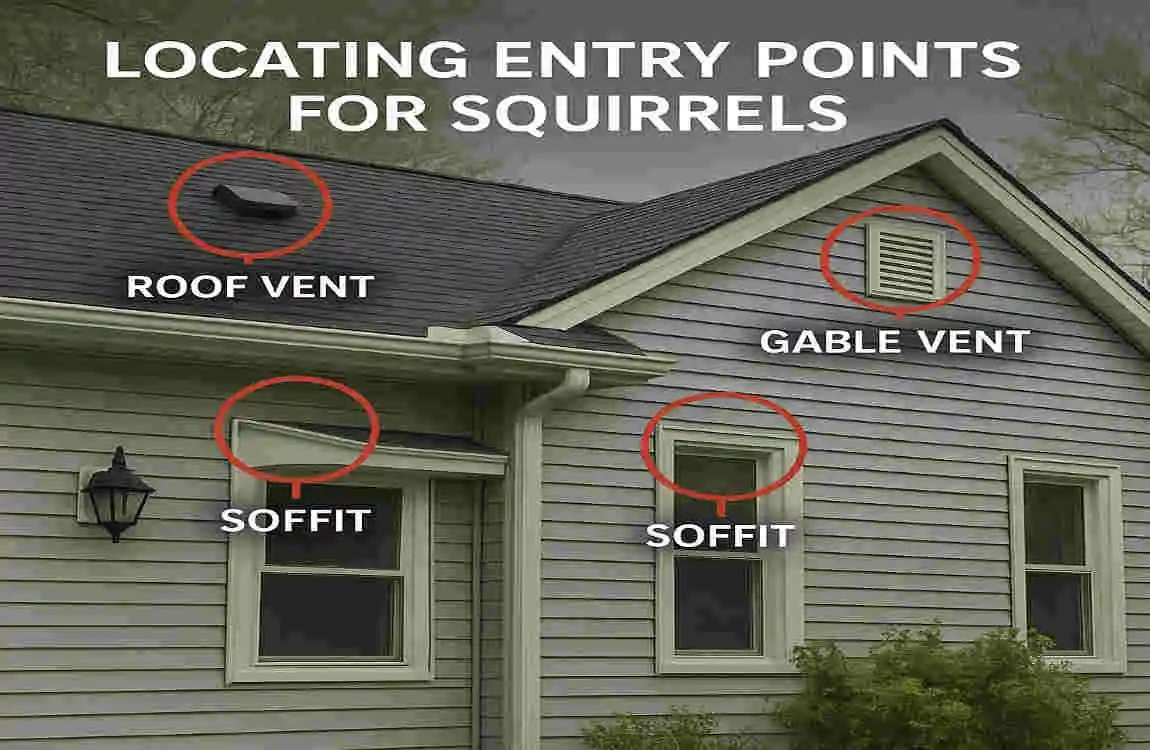
Locating entry points for squirrels can be a challenge. These agile creatures are experts at finding the tiniest openings.
Start your inspection outside. Walk around your home and look for gaps in eaves, vents, or foundation cracks. Please pay attention to areas near trees or utility lines, as they often use these as launch pads.
Next, move indoors and check attics, basements, and garages. Listen for scratching sounds during quiet hours. Look for droppings or nesting materials like twigs and leaves—these indicate activity.
Don’t forget about chimneys and exhaust vents; squirrels can slip through surprisingly small spaces.
Consider using a flashlight to illuminate dark corners where they might hide. A thorough search will help you pinpoint potential entry locations before they become permanent residents in your home.
Steps to Seal Squirrel Entry Points
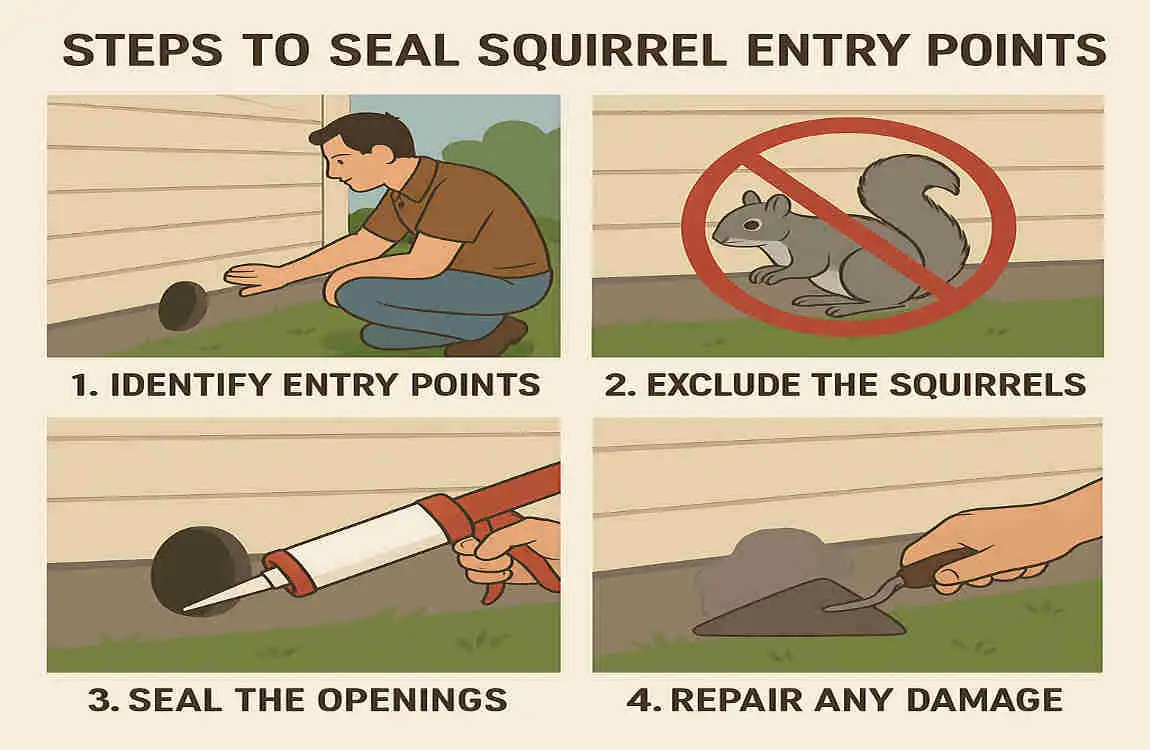
To effectively seal squirrel entry points, first gather your materials. Use sturdy items such as metal mesh or hardware cloth. These are essential for blocking openings.
Next, scrutinize your home. Look around eaves, vents, and gaps in siding where squirrels might sneak through. Pay special attention to areas near trees or utility lines.
Once you’ve identified the holes, start sealing them up. Cut pieces of metal mesh to fit snugly over each opening. Secure them with screws or strong adhesive to ensure they stay in place.
Don’t forget about smaller gaps, too! Squirrels can squeeze through surprisingly tiny spaces. Use expanding foam insulation for these narrow entries as an added layer of protection.
After sealing everything tightly, check regularly for new signs of activity or wear on the seals you’ve created. Staying vigilant is crucial in keeping those pesky critters at bay!
Preventing Future Infestations
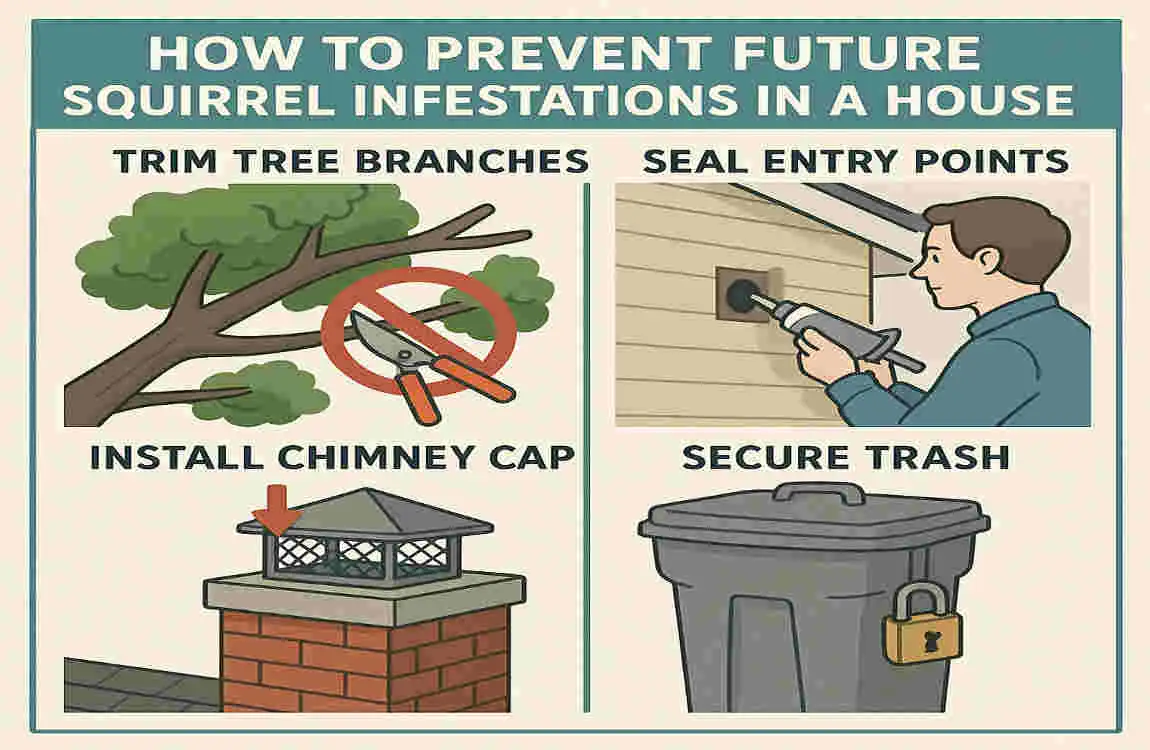
To keep squirrels at bay, start with proactive measures. Regularly inspect your home for potential weaknesses in exterior walls and roofs. Pay attention to areas around vents, chimneys, and eaves.
Trim back any tree branches that hang close to your house. Squirrels are agile climbers and will use these as pathways into your attic or gutters.
Secure trash bins with tight-fitting lids to eliminate easy food sources. Consider bird feeders placed well away from structures; they can attract not only squirrels but also other pests.
Use squirrel-proof barriers on entry points like vent openings or gaps under the roofline. Steel mesh or hardware cloth works wonders against determined critters.
Maintain a clean outdoor environment by removing fallen fruits or nuts from trees nearby. By making it less inviting outside, you contribute significantly to keeping these furry intruders out of your living space.
FAQ: How Do Squirrels Get in the House?
How do squirrels typically enter a house?
Squirrels are agile and resourceful creatures that can find their way into a house through various entry points. Some common ways they get inside include:
- Openings in the roof: Squirrels can chew through weak spots in the roof or find existing holes to gain access to the attic.
- Chimneys: Uncapped chimneys provide an easy entry point for squirrels looking for a warm place to nest.
- Vents and ducts: Squirrels can squeeze through vents and ducts, especially if they’re damaged or not properly screened.
- Gaps around windows and doors: Small gaps or cracks around windows and doors can be just enough for a squirrel to slip through.
- Damaged siding or soffits: Squirrels can chew through damaged or rotting siding and soffits to create an entry point.
What attracts squirrels to houses?
Squirrels are drawn to houses for several reasons:
- Warmth and shelter: Houses provide a cozy and safe place for squirrels to nest, especially during the colder months.
- Food sources: If you have bird feeders or fruit trees near your home, squirrels may be attracted to the easy food source.
- Nesting materials: Squirrels may enter your home in search of materials like insulation or paper to build their nests.
How can I tell if I have a squirrel in my house?
Some signs that you may have a squirrel in your house include:
- Scratching or scurrying noises: You may hear squirrels moving around in your walls, attic, or ceiling.
- Droppings: Squirrel droppings are small, dark, and cylindrical, and you may find them in areas where the squirrel has been active.
- Chew marks: Squirrels have strong teeth and may chew on wood, wires, or other materials in your home.
- Nesting materials: You may find shredded insulation, paper, or other materials that squirrels have used to build their nests.
How can I prevent squirrels from getting into my house?
To keep squirrels out of your home, consider these preventive measures:
- Seal all entry points: Inspect your home for any gaps, cracks, or holes and seal them with caulk, steel wool, or hardware cloth.
- Install chimney caps: A chimney cap can prevent squirrels from entering your home through the chimney.
- Trim tree branches: Keep tree branches at least 6 feet away from your roof to prevent squirrels from jumping onto your house.
- Secure vents and ducts: Cover vents and ducts with heavy-duty mesh or screening to keep squirrels out.
- Remove food sources: Keep bird feeders and pet food away from your home, and clean up any fallen fruit or nuts from your yard.
What should I do if I find a squirrel in my house?
If you discover a squirrel in your home, it’s best to contact a professional wildlife removal service. Attempting to remove the squirrel yourself can be dangerous, as they may bite or scratch if they feel threatened. A professional can safely and humanely remove the squirrel and help you prevent future infestations.
By understanding how squirrels get into houses and taking proactive measures to keep them out, you can protect your home from these furry invaders. If you have any more questions or need further assistance, don’t hesitate to reach out to a local wildlife control expert.

